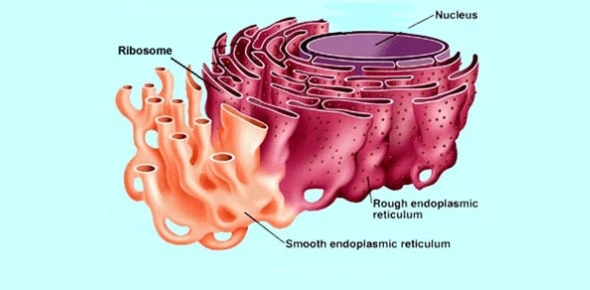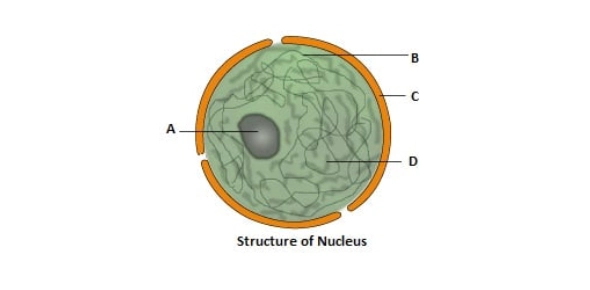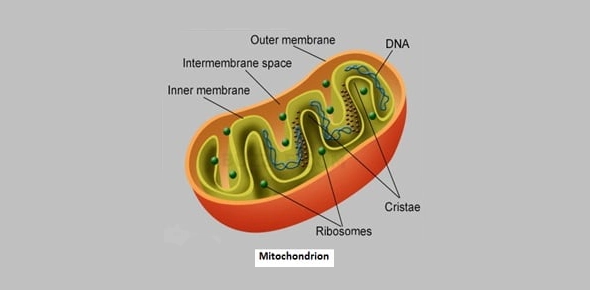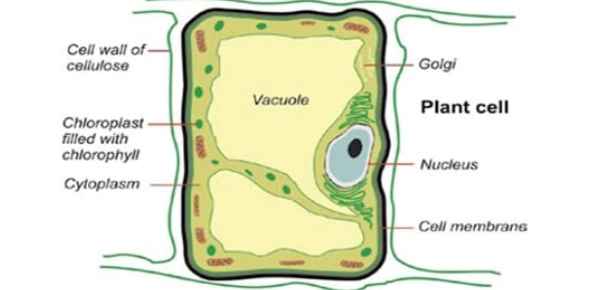Cell Quiz: The Fundamental Unit Of Life!

How well do you know about the fundamental unit of life, cells? Can you pass the quiz? All of us were taught in school that the cell is the basic fundamental unit of our lives. But are you confident about the fact that you remember everything related to this topic? Try playing this cell quiz for the fundamental unit of life quiz and see how well you can score.
- 1.
A cell will swell up if ___________________________.
- A.
The concentration of water molecules in the cell is higher than the concentration of water molecules in the surrounding medium
- B.
The concentration of water molecules in the surrounding medium is higher than the concentration of water molecules in the cell
- C.
The concentration of water molecules is same in the cell and in the surrounding medium
- D.
The concentration of water molecules does not matter
Correct Answer
B. The concentration of water molecules in the surrounding medium is higher than the concentration of water molecules in the cellExplanation
When the concentration of water molecules in the surrounding medium is higher than the concentration of water molecules in the cell, water will move into the cell through osmosis. This influx of water causes the cell to swell up.Rate this question:
-
- 2.
Endoplasmic reticulum, one of the cell organelles, exists as a membranous network that extends from the outer membrane of the nucleus to the plasma membrane, making a connection between them. Which of the following statements is not related to the endoplasmic reticulum?
- A.
It behaves as transport channel for proteins between nucleus and cytoplasm.
- B.
It transports materials between various regions in cytoplasm.
- C.
It can be the site of energy generation.
- D.
It can be the site of some biochemical activities of the cell.
Correct Answer
C. It can be the site of energy generation.Explanation
The endoplasmic reticulum is a membranous network that connects the outer membrane of the nucleus to the plasma membrane, allowing for the transport of materials between various regions in the cytoplasm. It also serves as a transport channel for proteins between the nucleus and cytoplasm, and it can be the site of some biochemical activities of the cell. However, it is not involved in energy generation.Rate this question:
-
- 3.
Which of the following statements marks a difference between plant cells and animal cells?
- A.
Plant cells have cell walls, which animal cells do not.
- B.
Plant cells do not have vacuoles, while animal cells do.
- C.
Plant cells have only cell membranes, while animal cells have both cell walls as well as cell membranes.
- D.
Plant cells have more plastids, while animal cells have fewer plastids.
Correct Answer
A. Plant cells have cell walls, which animal cells do not.Explanation
Plant cells have a cell wall, which is a rigid outer layer that provides structural support and protection. Animal cells, on the other hand, do not have a cell wall. This is a key difference between plant and animal cells. The presence of a cell wall in plant cells allows them to maintain their shape and withstand external pressures, while animal cells rely on other mechanisms for support and protection.Rate this question:
-
- 4.
You must have observed that a fruit when unripe is green but it becomes beautifully colored when ripe. According to you, what is the reason behind this color change?
- A.
Chloroplasts change to chromosplasts
- B.
Chromosplasts change to chromosomes
- C.
Chloroplasts change to chromosomes
- D.
Chromosplasts change to chloroplasts
Correct Answer
A. Chloroplasts change to chromosplastsExplanation
The color change in fruit, when it ripens, is due to the transformation of chloroplasts into chromoplasts. Chloroplasts are responsible for the green color in unripe fruits, as they contain chlorophyll. However, during the ripening process, Chloroplasts start to break down and are converted into chromoplasts. Chromoplasts contain pigments such as carotenoids, which give fruits their vibrant colors, such as red, orange, or yellow. Therefore, the change from chloroplasts to chromoplasts is the reason behind the color change in ripening fruits.Rate this question:
-
- 5.
Osmosis is a process by which molecules of a solvent tend to pass through a semipermeable membrane from a less concentrated solution into a more concentrated one. Can you pick out the option among the following which does not belong to this process?
- A.
The movement of water across a semipermeable membrane is affected by the amount of substances dissolved in it.
- B.
Membranes are made of organic molecules such as proteins and lipids.
- C.
Molecules soluble in organic solvents can easily pass through the membrane.
- D.
Plasma membranes contain chitin sugar in plants.
Correct Answer
D. Plasma membranes contain chitin sugar in plants.Explanation
The correct answer is "Plasma membranes contain chitin sugar in plants." This option does not belong to the process of osmosis because it refers to the composition of plasma membranes in plants, specifically mentioning the presence of chitin sugar. However, osmosis is a process that involves the movement of molecules of a solvent through a semipermeable membrane, and the composition of the membrane is not relevant to the definition of osmosis.Rate this question:
-
- 6.
The nucleus controls all the activities of the cell and acts as a site of DNA material and protein synthesis. It is composed of some components which all together give the nucleus its functionality. Here is a figure of the nucleus with some of its components labeled as A, B, C, and D. Guess the name of these components correctly. x
- A.
A – Nucleons; B – Chromatin; C – Nuclear membrane; D – Nucleoplasm
- B.
A – Nucleus; B – Chromatin; C – Nuclear membrane; D – Nucleoplasm
- C.
A – Nucleolus; B – Chromatin; C – Nuclear membrane; D – Nucleoplasm
- D.
A – Nucleolus; B – Chromatin; C – Nuclear membrane; D – Nuclear wall
Correct Answer
C. A – Nucleolus; B – Chromatin; C – Nuclear membrane; D – NucleoplasmExplanation
The correct order is A - Nucleolus, B - Chromatin, C - Nuclear membrane, D - Nucleoplasm. The nucleolus is responsible for producing ribosomes, which are essential for protein synthesis. Chromatin is the material that makes up the chromosomes and contains DNA. The nuclear membrane acts as a barrier, controlling the movement of substances in and out of the nucleus. The nucleoplasm is the fluid inside the nucleus that contains various components necessary for cellular processes.Rate this question:
-
- 7.
Rahul’s mother was going to make pickles. For this, she cut the vegetables into small pieces, salted them, and put them in the sun for a few hours. Rahul was observing all her activities very curiously and asked his mother why she had put the salted vegetables in the sun. Among the following, what might be the most appropriate answer to his question?
- A.
So that the pickle may get extra flavour.
- B.
So that the cut vegetables may absorb the vitamin d as a nutrient from the sun rays.
- C.
So that the vegetables may lose all the water by diffusion and evaporation and become dry.
- D.
So that the salt may get evenly and properly absorbed by the vegetables.
Correct Answer
C. So that the vegetables may lose all the water by diffusion and evaporation and become dry.Explanation
The most appropriate answer for Rahul's question is "So that the vegetables may lose all the water by diffusion and evaporation and become dry." This answer explains that by putting the salted vegetables in the sun, the water content in the vegetables will evaporate, resulting in the vegetables becoming dry. This is an important step in making pickle as it helps in preserving the vegetables for a longer period of time.Rate this question:
-
- 8.
The process of plasmolysis in plant cell is defined as:
- A.
Breakdown of plasma membrane in hypotonic solution.
- B.
Shrinkage of cytoplasm in hypertonic medium.
- C.
Shrinkage of Nucleoplasm.
- D.
None of these.
Correct Answer
B. Shrinkage of cytoplasm in hypertonic medium.Explanation
Plasmolysis is the process in which the cytoplasm of a plant cell shrinks due to the loss of water when placed in a hypertonic (concentrated) solution. The hypertonic solution has a higher solute concentration than the cell, causing water to move out of the cell through osmosis. As a result, the cytoplasm shrinks away from the cell wall. This process does not involve the breakdown of the plasma membrane or the shrinkage of nucleoplasm.Rate this question:
-
- 9.
Mitochondria are the sites of respiration in the cell. They oxidize carbohydrates and fats present in the cell to produce carbon dioxide, water and a lot of energy. The energy so released is stored in the form of ATP molecules. Since mitochondria in the cell are used to synthesize energy so, they are also called:
- A.
Energy currency of the cell
- B.
Energy generator of the cell
- C.
Kitchen of the cell
- D.
Power house of the cell
Correct Answer
D. Power house of the cellExplanation
Mitochondria are often referred to as the "power house of the cell" because they are responsible for generating energy in the form of ATP molecules. Through the process of respiration, mitochondria oxidize carbohydrates and fats to produce carbon dioxide, water, and a large amount of energy. This energy is then stored in ATP molecules, which can be used by the cell for various metabolic activities. Therefore, the term "power house of the cell" accurately describes the role of mitochondria in energy production and utilization.Rate this question:
-
- 10.
In a test a teacher collected the answers given by four students as the definitions of osmosis as given below. Read carefully and select which is the correct definition.
- A.
Movement of water molecules from a region of higher concentration to a region of lower concentration through a semipermeable membrane.
- B.
Movement of solvent molecules from its higher concentration to lower concentration.
- C.
Movement of solvent molecules from higher concentration to lower of solution through a permeable membrane.
- D.
Movement of solute molecules from lower concentration to higher concentration of solution through a semipermeable membrane.
Correct Answer
A. Movement of water molecules from a region of higher concentration to a region of lower concentration through a semipermeable membrane.Explanation
The correct answer is the first option, "Movement of water molecules from a region of higher concentration to a region of lower concentration through a semipermeable membrane." This is the correct definition of osmosis, as it describes the movement of water molecules across a semipermeable membrane in response to a concentration gradient. The other options either describe the movement of solvent molecules or the movement of solute molecules, which are not accurate definitions of osmosis.Rate this question:
-
- 11.
Cell is the structural and functional unit of life. The word cell is derived from the Latin word ‘cellula’ which means “a little room”. Can you name the scientist who coined the term cell?
- A.
Robert Hooke
- B.
Anton Van Leeuwenhoek
- C.
Robert Brown
- D.
Ernst Haeckel
Correct Answer
A. Robert HookeExplanation
Robert Hooke is credited with coining the term "cell" to describe the basic unit of life. He observed cork under a microscope and noticed small compartments that resembled the cells of a monastery, which led him to name them cells. This discovery revolutionized the understanding of biology and laid the foundation for the cell theory.Rate this question:
-
- 12.
Which one of the following statements is incorrect?
- A.
Golgi apparatus is involved with formation of lysosomes.
- B.
Nucleus, mitochondria and plastid have DNA, hence they are able to make their own structural proteins.
- C.
Lysosomes are called the suicide bags as they eat up their own cells.
- D.
Cytoplasm is also known as protoplasm.
Correct Answer
D. Cytoplasm is also known as protoplasm.Explanation
The statement "Cytoplasm is also known as protoplasm" is incorrect. Cytoplasm and protoplasm are two different terms. Cytoplasm refers to the jelly-like substance that fills the cell and contains various organelles, while protoplasm refers to the entire living content of a cell, including the cytoplasm and the nucleus.Rate this question:
-
- 13.
Anjali wanted to eat rice and kidney beans (rajmah). She requested her mother to cook the same on the next day. At night, her mother took a cup of kidney beans put them in a container having some water, and kept the container covered overnight. The next day, it was observed that the kidney beans had swollen and were ready to be cooked. What is this phenomenon due to which kidney beans get swollen is known as? (i) Reverse Osmosis (ii) Diffusion (iii) Endosmosis (iv) Exosmosis Choose the correct option among the following:
- A.
Only (iii)
- B.
Both (i) and (iii)
- C.
Both (i) and (iv)
- D.
Only (i)
Correct Answer
A. Only (iii)Explanation
The phenomenon due to which the kidney beans were swollen is known as osmosis. Osmosis is the movement of water molecules from an area of lower solute concentration to an area of higher solute concentration through a semi-permeable membrane. In this case, the kidney beans absorbed water from the container, causing them to swell. Endosmosis is a specific type of osmosis where water moves into a cell or a structure. Therefore, (iii) is correct.Rate this question:
-
- 14.
A vacuole is a space or cavity within the cytoplasm of a cell, enclosed by a membrane and typically containing fluid. They are a kind of storage sacs that are very large-sized in plant cells as compared to that in animal cell. Which among the following is not a function of the vacuole?
- A.
They help to store the toxic metabolic by-products of the plant cell.
- B.
They provide turgidity and rigidity to the plant cell.
- C.
They help to maintain the osmotic pressure in the cell.
- D.
They help the plant in its growth by the process of cell division.
Correct Answer
D. They help the plant in its growth by the process of cell division.Explanation
The vacuole is not involved in the process of cell division, which is primarily regulated by the nucleus and other cellular structures. The vacuole plays a role in storing metabolic by-products, providing turgidity and rigidity to the cell, and maintaining osmotic pressure.Rate this question:
-
- 15.
The proteins and lipids, essential for building the cell membrane, are manufactured by:
- A.
Endoplasmic reticulum
- B.
Golgi apparatus
- C.
Mitochondria
- D.
Peroxisomes
Correct Answer
A. Endoplasmic reticulumExplanation
The endoplasmic reticulum is responsible for the synthesis and modification of proteins and lipids, which are essential components of the cell membrane. This organelle has a network of interconnected membranes where these molecules are produced and processed before being transported to their final destination. The Golgi apparatus also plays a role in modifying and packaging these molecules, but it does not directly manufacture them. Mitochondria and peroxisomes are involved in energy production and metabolism, respectively, and are not primarily responsible for building the cell membrane.Rate this question:
-
Quiz Review Timeline +
Our quizzes are rigorously reviewed, monitored and continuously updated by our expert board to maintain accuracy, relevance, and timeliness.
-
Current Version
-
Feb 13, 2024Quiz Edited by
ProProfs Editorial Team
Expert Reviewed by
Stephen Reinbold -
Jan 08, 2015Quiz Created by
Tanmay Shankar
- Aeronautics Quizzes
- Aerospace Quizzes
- Agricultural Science Quizzes
- Astrology Quizzes
- Astronomy Quizzes
- Atom Quizzes
- Biochemistry Quizzes
- Biomechanics Quizzes
- Biostatistics Quizzes
- Biotechnology Quizzes
- Botany Quizzes
- Branches Of Science Quizzes
- Chemistry Quizzes
- Cytology Quizzes
- Easy Science Quizzes
- Ecology Quizzes
- Electrical Quizzes
- Embryology Quizzes
- Endocrinology Quizzes
- Engineering Quizzes
- Environmental Science Quizzes
- Epidemiology Quizzes
- Experiment Quizzes
- Forestry Quizzes
- Fossil Quizzes
- Gas Quizzes
- General Science Quizzes
- Genetics Quizzes
- Histology Quizzes
- Human Biology Quizzes
- Integrated Science Quizzes
- Invention Quizzes
- Library Science Quizzes
- Lighting Quizzes
- Liquid Quizzes
- Marine Biology Quizzes
- Microbiology Quizzes
- Molecular Biology Quizzes
- Nature Quizzes
- Neuroscience Quizzes
- Nuclear Science Quizzes
- Oceanography Quizzes
- Physics Quizzes
- Psychology Quizzes
- Science And Technology Quizzes
- Science Glossary Quizzes
- Science Knowledge Quizzes
- Science Practice Quizzes
- Scientific Method Quizzes
- Scientific Notation Quizzes
- Soil Science Quizzes
- Solar System Quizzes
- Solid Quizzes
- Zoology Quizzes
 Back to top
Back to top






